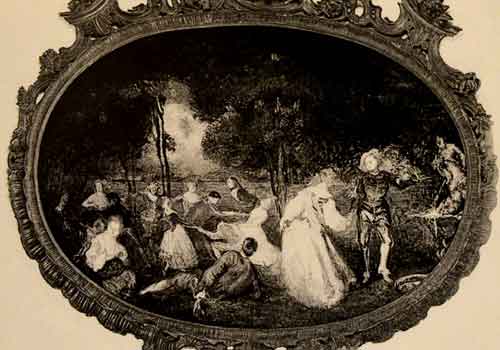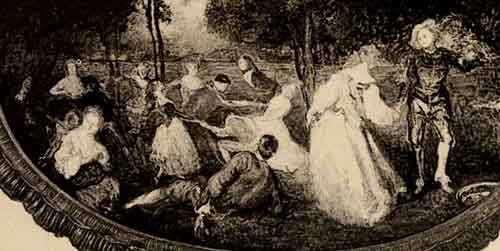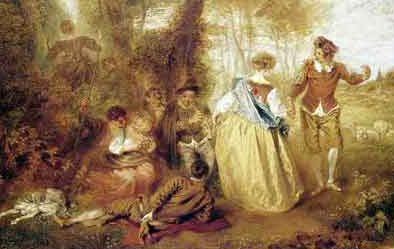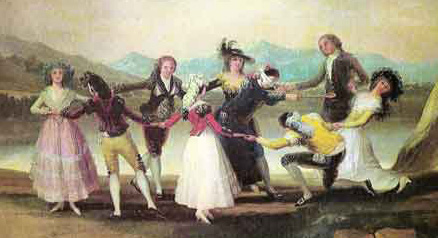
- Home Page
- Accepted
Paintings & Copies - Doubtful
Attributions - Doubtful Textual References
- Alternative
Titles - Collectors &
Museums - Bibliography
- Search Abecedario
- Watteau &
His Circle
X. Fête champêtre
Entered July 2018; revised May 2021
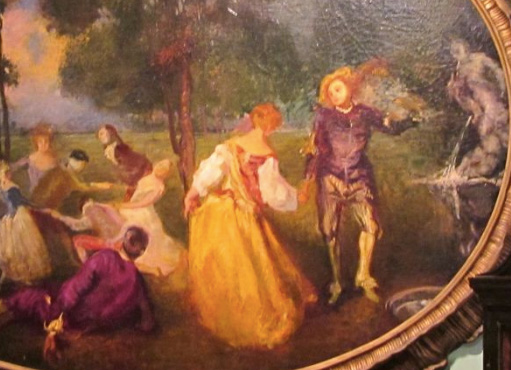
Whereabouts unknown
Oil on canvas
97 x 138 cm
PROVENANCE
Vienna, sale, Dorotheum, October 6, 1999, lot 452: “Antoine Watteau . . . Nachahmer / Fête Champêtre, Öl auf Leinwand, oval, 97 x 138 cm, kostbarer, geschnitzter vergoldeter Rahmen, (Wo). ATS 60.000 – 80.000 / EURO 4.400 - 5.900 / US $ 5.000 – 6.700”. Sold for 110,000 Austrian schillings and premium ($8,581 US and premium).
Paris, Artemisia Auctions, December 10, 2014, lot 74: D’après ANTOINE WATTEAU-Scène galante-Toile - 96 cm x 137 cm-. Cadre du XIXème siècle en bois et plâtre et doré. estimation 1000€ / 2000€
REMARKS
When this painting came up at auction in 1999 and again in 2014, it was rightly recognized to be by an imitator of Watteau. All the foreground figures—the pair of dancing shepherds, the seated man embracing his partner from behind, and the youth lying on the ground—are all derived from Watteau’s Le Plaisir pastoral, now in Chantilly. However, whereas Watteau had painted them as an organic whole, in this painting they have been arranged as three separate groups, and are arranged so as to enframe the background scene of men and women playing blind’s man bluff.
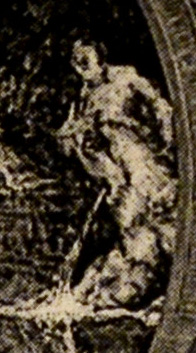
Fête champêtre (detail).
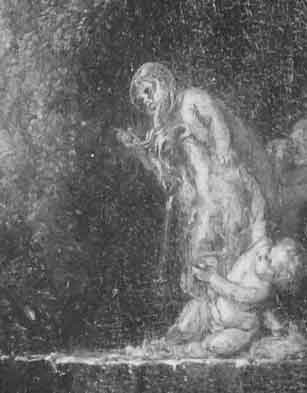
Watteau, La Cascade (detail). Whereabouts unknown.
The fountain at the far right of the composition, showing putti scampering over a goat, is a familiar motif in Watteau’s fêtes galantes. In this instance the sculptural group was probably borrowed from the artist’s La Cascade.
The background scene of ladies and gentlemen playing the game of blind men’s buff is a telling element in this pastiche. Especially important are the poses of the woman at the right who pulls backward without releasing the hands of the members of the ring, and the man who holds her left hand and kneels, as he ducks to avoid being touched by the blindfolded player. These characters are not related to those in Watteau’s early painting, Le Colin-maillard, nor are they related to Pater’s or Lancret’s many depictions of the game. Instead, they are taken verbatim from Goya’s design for a tapestry that is now in the Prado. As the Spanish artist’s picture was not executed until 1789, this offers a firm terminus post quem for this fête champêtre . Rather than being by a follower of Watteau, which suggests a date in the first half of the eighteenth century, this picture must have been fabricated in the nineteenth or twentieth century.
